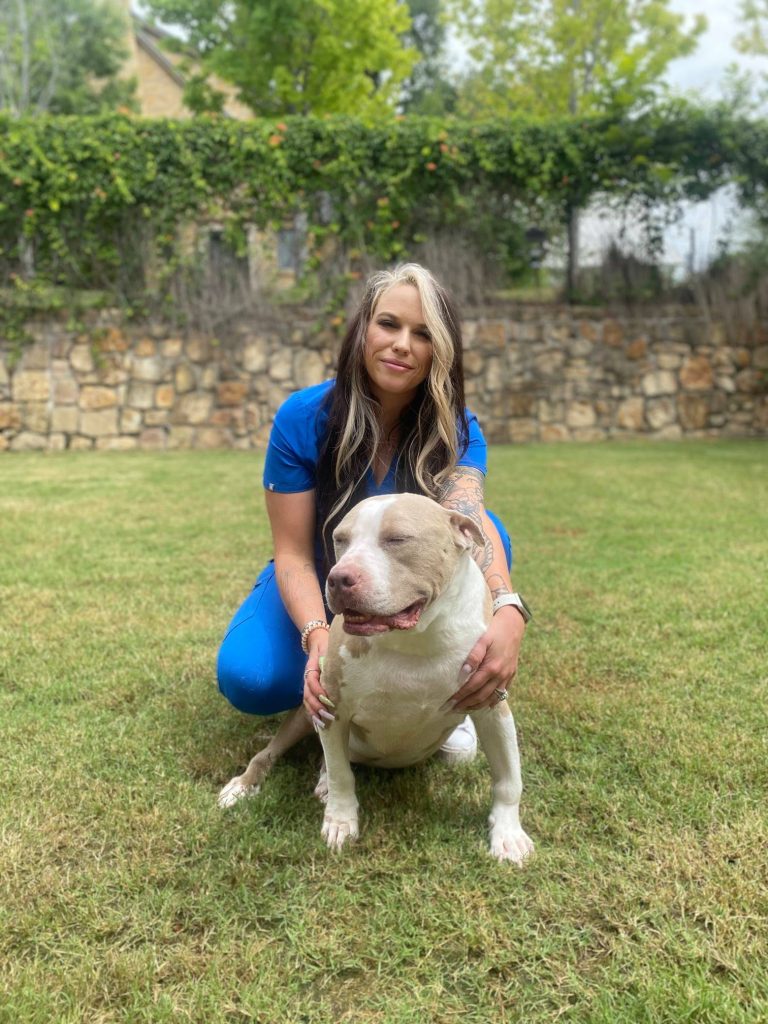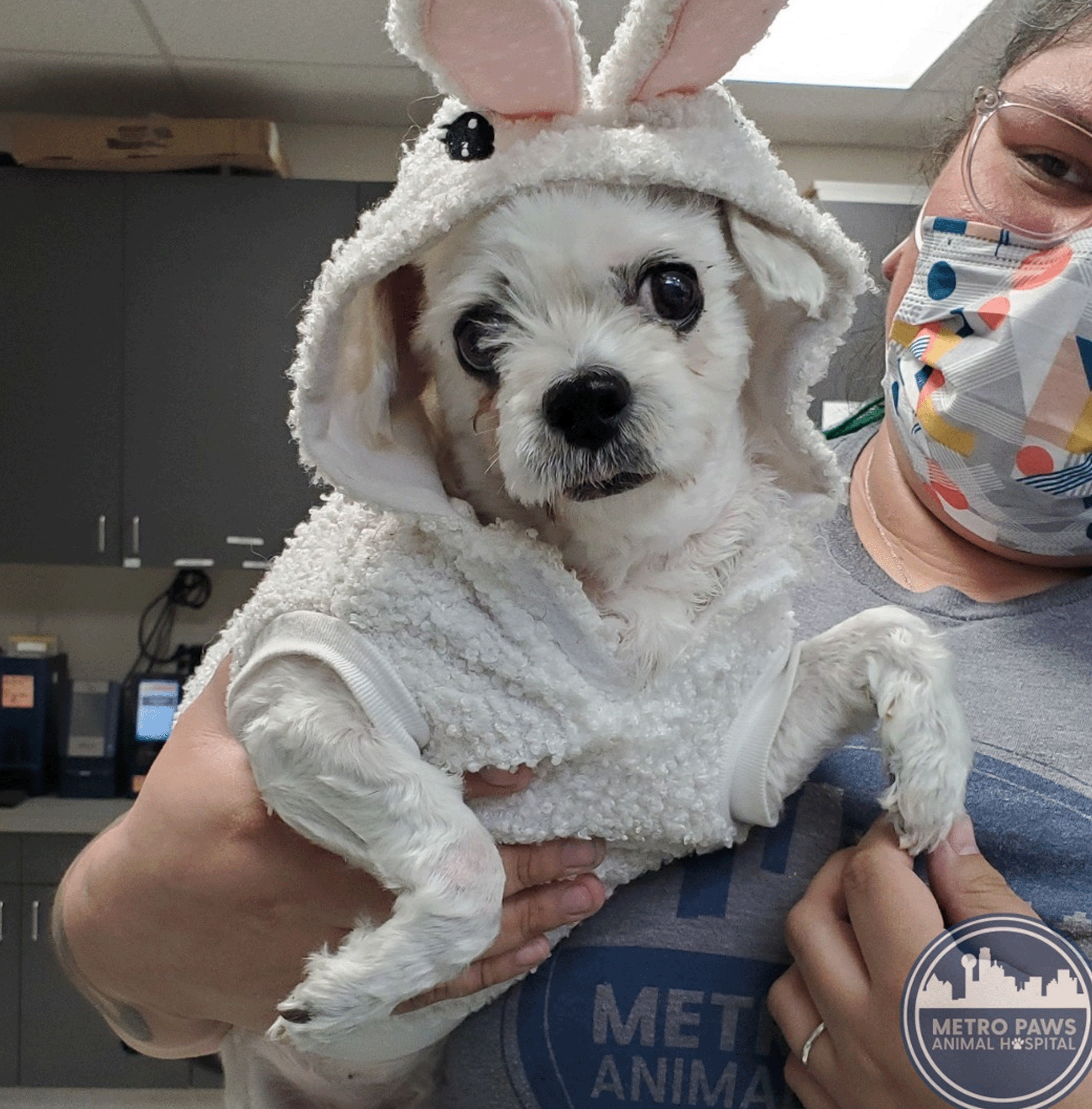How to Pet-Proof Your Yard and Other Areas to Keep Your Pets Safe This Spring
March 20 marks the first day of spring! With more daylight, the promise of sunshine, and an unfailing sense of optimism, you could be considering hitting the hiking trails with your pup. As veterinarians, however, it’s our duty to tell you that, with spring and its warmer temperatures, come a few dangers for your pets to be aware of. With a few precautions on your part, all will be well, and you and your fur friends can enjoy this wonderfully upbeat season.

In this article, we’ll be covering:
- 14 springtime hazards to your pet to keep on your radar
- Tips on spring and pet-proofing your yard
As dogs (and some cats) head outdoors more, their exposure to the elements and all that goes with them increases. If we know what they are, we can do things like pet-proof our yards and other outdoor areas; we can enjoy the spring season and all that it brings.
14 Springtime Hazards to Your Pet to Keep on Your Radar
- Ticks and the possibility of tick-borne diseases — As your pets wander into wooded areas or tall grass, their risk of being bitten by ticks increases. We’ve all heard of Lyme Disease, but there are other tick-borne diseases you should have on your radar:
- Ehrlichiosis
- Spotted Fever
- Babesiosis
- Anaplasmosis
- Rocky Mountain spotted fever
- There are some links between ticks and kidney disease
Be sure to have your precious pet on year-round flea and tick prevention.
- Toxic plants, flowers, and fertilizers — If you’ve got a green thumb, you’ve likely been itching for months to get out those gardening gloves and get into the soil. Just be aware that some fertilizers, herbicides, and insecticides may be dangerous to pets, so always store them where your pets can’t reach them. Consider fencing the areas/gardens where you use these because even if they don’t poison your pet, ingesting them can cause pancreatic or intestinal problems. And remember that many plants and flowers can be toxic to cats and dogs.
- Mosquitoes and heartworm disease — We recommend year-round heartworm prevention, but it’s particularly important in the warm-weather months due to mosquitos, which is how heartworm disease is transmitted. Because heartworm disease is a serious illness that affects the heart and lungs and sometimes the eyes, kidneys, liver, and nervous system, prevention is critical. Ask us what’s best for your pet.
- Bee stings — Okay, okay, we’ve seen the dog-loses-to-bee photos on social media and can understand how they might elicit a giggle. Of course, however, no one wants their pets to experience that, especially because some pets can be allergic. As the weather gets nicer, walk your yard to ensure you don’t have any hives or nests, and be sure to talk to us about what to do if your pet gets stung.
- Chocolate and other Easter treats — As all pet owners likely know, chocolate can be toxic to cats and dogs, so keep your treats out of pets’ reach. Also, Easter lilies can be fatal when ingested by cats, and kittens have been known to nosh on the plastic grass from Easter baskets, which can cause an obstruction.
- Screens that haven’t been secured — Ahh, there’s nothing quite like the first time you open those windows to let in that fresh springtime air. However, before doing so, ensure all screens are secure. Far too many cats have gone through screens from the second and even third floors.
- Slug bait — In an ideal world, we’d love it if no one used metaldehyde or slug bait, but if you must, be sure to prevent your pets from being exposed. It’s appealing to them as it tastes sweet, and even a small amount can cause significant metaldehyde poisoning. If your pet has ingested some, you may see twitching, seizures, tremors, muscle spasms, or incoordination, so you need to get them to the emergency animal hospital immediately. Some gardeners use cocoa shell mulch, which is also hazardous, as it contains the same chemical as chocolate.
- Barbecues — We love a good springtime barbecue as much as the next person, but ensure that you keep skewers, bones, and alcohol far away from curious pets.
- Snakes — There is at least one breed of venomous snake in all but 3 of the 50 states! And while they aren’t typically purposefully aggressive, your dog can easily stumble upon them while on a hike or a walk and get a venomous bite. The good news is that most dogs will survive a snake bite if tended to by a veterinary team quickly, so rinse out the wound, if possible, keep the wound below the heart, and call the animal hospital to let them know you’re en route and what happened.
- Grass blades — Some cats have an affinity for eating long blades of grass, which is usually harmless overall. However, if they get enough, they can get blades of grass stuck in their nose and throat. A cat can cough so hard that the blade of grass gets into the pharynx, or they might vomit, but the blade does not make it into the mouth, thus getting stuck in the pharynx. Either way, it’s a bit of a veterinary nightmare, as the cat must be anesthetized for us to get it out, so it’s better to avoid this circumstance as best you can!
- Spring Cleaning and Home improvement —Many people take advantage of springtime by doing spring cleaning, painting, and other home projects. This means that things like cleaners with chemicals, mineral solvents, paints, and other toxins can be lying around, along with items like staples, nails, insulation, and power tools. Please put your pets in an area where they are safe and can’t access the areas being renovated and potentially toxic cleaners.
- Lost pets — We’re often out and about more when spring has sprung, enjoying jaunts to the parks, trails, and other areas. The more we take opportunities like this, the more our dogs can get away from us while we’re getting things out of the car, etc. To avoid the worry of losing a pet, ensure that they are microchipped and that your information is up to date with the microchipping company
- Antihistamines — Even the most well-meaning of parents often think to administer antihistamines to treat the allergies that pets get—just as humans do—during the spring. Unfortunately, these may be toxic to dogs if the incorrect dose is given. Always consult with your veterinarian before giving ANY over-the-counter medication! Some signs that your dog may have antihistamine toxicity are:
- Lethargy
- Incoordination
- Tremors
- Wobbly gait
- Vomiting
- Unsafe travel in cars — We saved this one for last, as we know hearing that letting your dogs hang their heads out the window is a huge disappointment, especially if you’re considering a spring break road trip. The truth is, however, doing so can cause possible eye or lung infections due to debris and insects coming at them at high speed. Dogs should always be properly secured, and cats should be in carriers.

Tips on Spring and Pet-Proofing Your Yard
For many of us, our yards are our oasis—a peaceful respite from the world. The last thing we want is to worry about our pets being out there with us due to hazardous items. Take the time to walk around and look at everything from your dog’s perspective. Something utterly mundane to you could spell trouble for your canine companion.
Other ways to pet-proof your yard are:
- Secure trash cans, recycle bins, and other containers — While not all dogs are the type to get into things they shouldn’t, many of them are, and it’s often a matter of instinct due to their breed type. You don’t want your dog to be able to access last night’s dinner, which could contain potentially toxic items (i.e., bones, garlic, mushrooms, onions, etc.). Not to mention, a dog who has smelled something appealing inside a trash bag can cause quite a mess!
- Provide water and shade — As a responsible pet owner, you should never leave your dog unattended in your yard for long periods. But a super-hot spring day could sneak up on you, and some dog breeds overheat quickly. Make sure your dog always has access to shade and water. A small kiddie pool is also a great addition to your yard for larger dogs as the temperatures begin to rise.
- Know what’s growing — As mentioned above, certain plants and flowers are toxic to pets, so take the time to know what’s growing in your yard. If you’ve got a garden with things like daffodils and tulips, ensure pets can’t access that area. Better yet, choose plants and flowers you know are not on the potentially toxic list when growing a garden.
- Keep it manicured — Not only will this make your yard look better, but short, manicured grass will ideally prevent pests like fleas and ticks from thriving. Pests love dark, damp areas, and mosquitoes love standing water, so give your yard a good spring cleaning.
- Ensure proper fencing — You could leave the door to your yard open for hours, and some dogs will still be sitting there contently enjoying the sun. Other dogs, however, are hoppers, jumpers, or leapers, and, again, this is often related to their breed. Ensure your fence is high enough to prevent escape.
Three other tips the American Kennel Club (AKC) offers regarding fences are:
- Remove climbing aids, such as garbage cans, chairs, or garbage cans.
- Buy coyote rollers— long, metal bars designed to cause dogs to roll, keeping them in, while on the other side, they’re also keeping coyotes out.
- Add landscaping, as dense hedges or shrubs will look great and make for a more challenging jump.
While this might sound daunting, we don’t want the first day of spring to be anything but the positive experience it should be. With some commonsense precautions, you and your feline friends and canine companions will be able to enjoy this special season.
Are you due for some preventive care that will help keep your pets safe this spring? Give us a call today!
